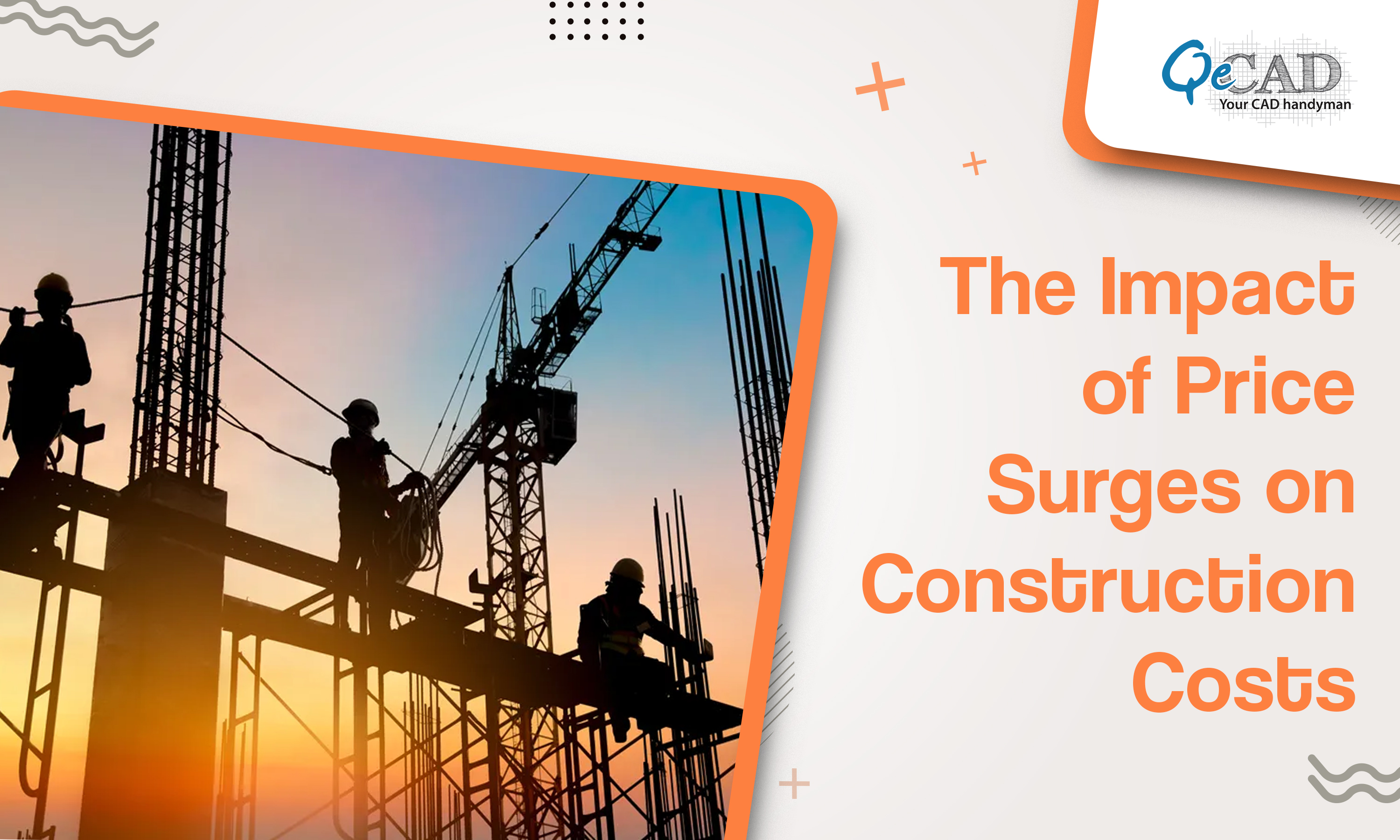
Introduction
The construction industry is pivotal and indispensable in various aspects of nations’ economic growth and development. However, in recent years, it has faced a significant challenge due to the relentless rise in prices of essential construction materials and other cost factors. This blog post will uncover the impact of rising prices on construction costs, highlighting key statistics that underscore the severity of this issue.
1) Escalating Material Costs
The surge in building material prices stands as a significant factor behind the soaring construction costs. For example, as per the Bureau of Labor Statistics, the Producer Price Index (PPI) for construction materials was 8.1% higher in 2022 than the previous year. The upswing can be attributed to a multitude of factors, encompassing disruptions in the supply chain, heightened demand, and inflationary pressures. Materials such as lumber, steel, concrete, and copper have experienced dramatic price spikes, adversely affecting construction budgets.
2) Impact of Labor Costs
Beyond materials, labor costs also play a pivotal role in determining overall construction expenses. A shortage of skilled labor can drive up wages as companies compete for a limited workforce. Moreover, inflation can further exacerbate the situation, eroding the purchasing power of construction workers and putting upward pressure on their wages. As per the Associated General Contractors of America, construction industry employment costs rose by 3.5% in 2022, outpacing the average for all private industries.
3) Real Estate Bubble
There is a growing concern about a real estate bubble in the context of rising property values. As land prices surge, construction firms must allocate more resources to acquire suitable building sites, ultimately driving up project costs. This has a cascading effect on housing affordability, making it difficult for many of the players to enter the property market.
4) Transportation and Logistics
The construction industry relies heavily on the transportation and logistics sector to deliver materials and equipment to project sites. Unfortunately, disruptions in supply chains, combined with increasing fuel costs, have led to higher transportation expenses. A report by the American Transportation Research Institute found that heavy-duty trucks’ average marginal cost per mile rose by 12% in 2022, impacting construction costs significantly.
5) Impact on Infrastructure Projects
Public infrastructure projects, crucial for economic growth and community development, have not been immune to the challenges posed by rising costs. A study by the National Association of State Budget Officers indicated that the prices of infrastructure projects rose by an average of 7.5% in 2022, putting strain on government budgets and potentially delaying much-needed projects.
Conclusion
The construction industry is grappling with the impact of rising prices on construction costs, making it increasingly difficult for stakeholders to meet project budgets and deadlines. The surge in material costs, labor expenses, land values, transportation disruptions, and potential real estate bubbles have created a challenging environment for construction firms, developers, and governments alike.
Addressing and coping with these challenges requires a multi-faceted approach, including proactive planning, innovative cost-saving measures, and policy interventions to stabilize and control inflation. Additionally, fostering a skilled workforce and investing in sustainable building practices by a CAD Company can contribute to mitigating the impact of rising prices and creating a more resilient construction sector. In addition, technology’s role is vital in mitigating price surges. Digital solutions like Building Information Modelling (BIM) and other technological innovations are being harnessed to enhance productivity, minimize waste, and optimize operations.
As the global economy continues to progress, it is essential for industry stakeholders to remain adaptable and find creative BIM Outsourcing Services to storm off escalating construction costs. Only through collaborative efforts and forward-thinking strategies can the construction industry overcome these challenges and continue to build a brighter future for society.
